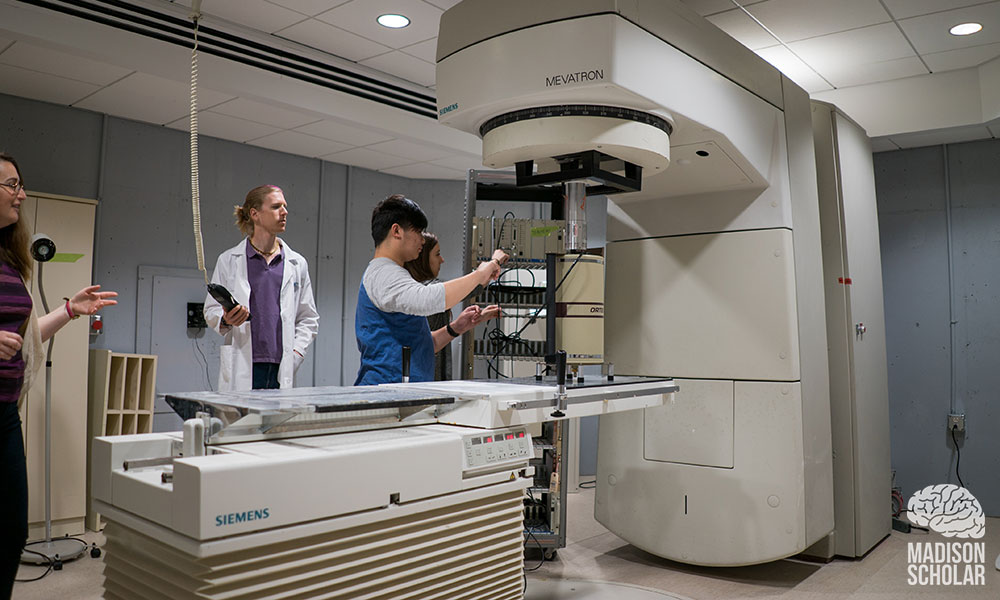'This is where you come in'
New accelerator lab energizes nuclear research at JMU

SUMMARY: The laboratory will be capable of
performing low energy experiments for a range of purposes, including
nuclear physics, nuclear astrophysics, nuclear engineering, nuclear
forensics and homeland security.
When you look at stars through a telescope, you only see a little, you can only measure a few isotopes. To better understand how stars create all naturally occurring elements, you need some knowledge of what goes on inside them, “and that’s where you come in,” Professor Art Champagne told a gathering of researchers last week at a workshop to explore the research possibilities at a new physics lab at JMU.
The Madison Accelerator Laboratory, located on the first floor of the newly renovated Madison Hall, will swing into full operation this fall. More than 10 years in the making, the laboratory features a medical electron linear accelerator, a 140 keV X-ray imaging machine and standard particle detection instrumentation. The linear accelerator, purchased from Rockingham Memorial Hospital when it moved to new digs, is a versatile magnetron unit that can provide electron and photon beams with energies up to 15 MeV.
Champagne, the William C. Friday Distinguished Professor of Physics at the University of North Carolina, Chapel Hill, and a Fellow of the American Physical Society, was one of 10 speakers to address the two-day workshop that included researchers from universities in Greece and Turkey that also have medical accelerators. While other labs are also investigating how stars work, there's always room for more, Champagne said. No one facility will be able to answer all the questions, "we need complimentary facilities, we need to have a very broad approach to some of these problems."

Adriana Banu, associate professor of physics and astronomy at JMU and one of the leaders in establishing the lab, said convenient access to do beam research will be one of the greatest advantages of MAL. Such research now requires making reservations at places like Jefferson National Laboratory in Newport News or the Triangle Universities Nuclear Laboratory in Durham, North Carolina. Those reservations are hard to get and add pressure to do the research in the time allotted. Students also will benefit by working in a facility with an accelerator where they will get training on working with equipment that produces radiation and on running the equipment, which will prepare them for a wide range of careers.

Published: Friday, June 23, 2017
Last Updated: Monday, June 26, 2017
